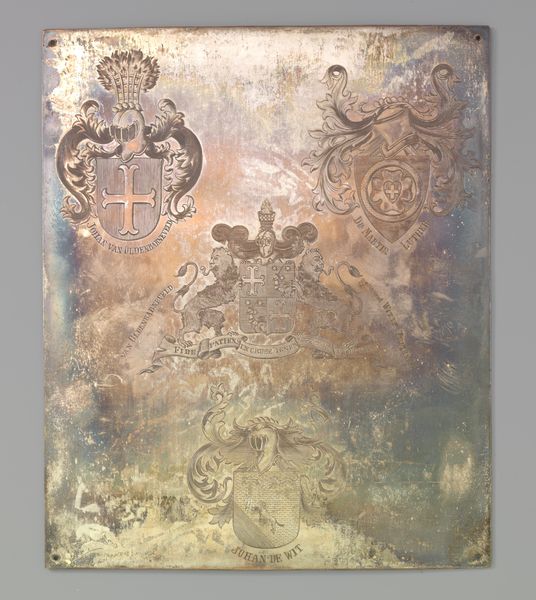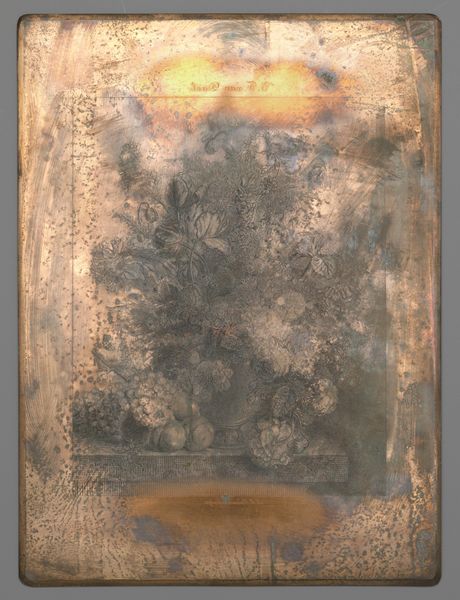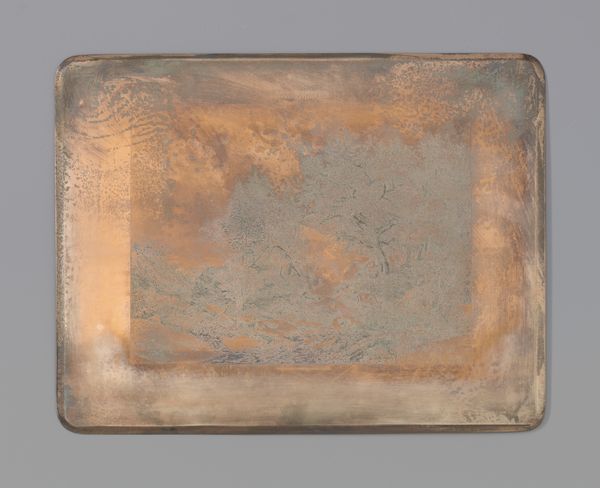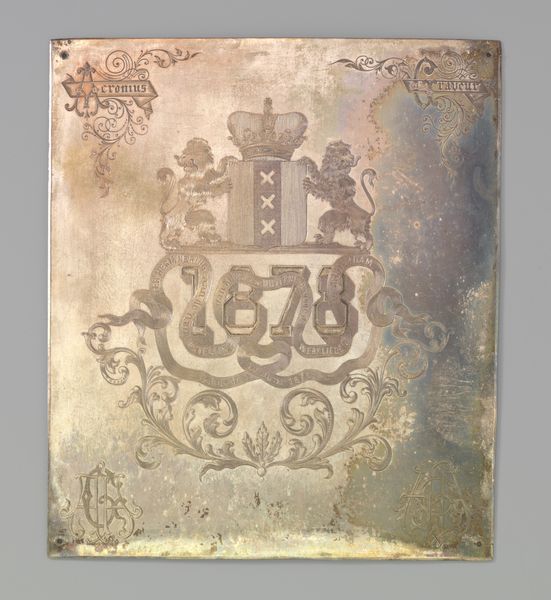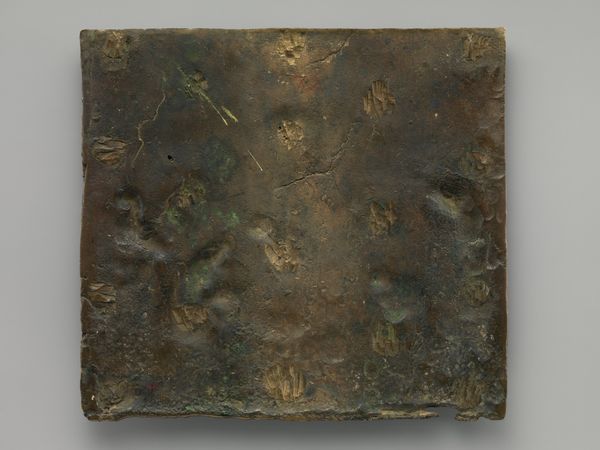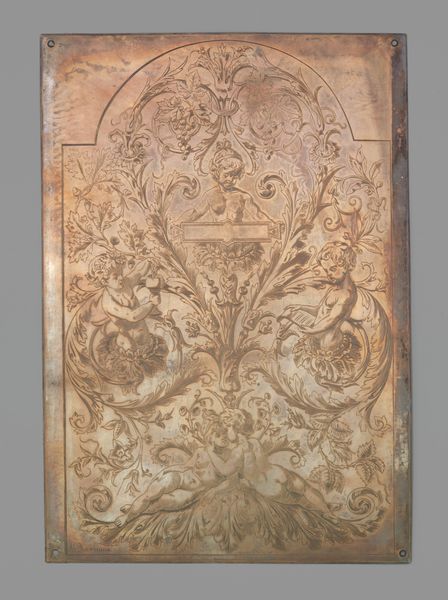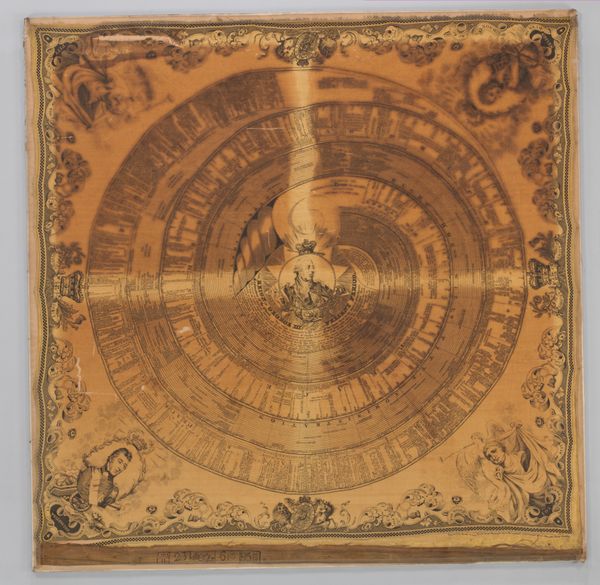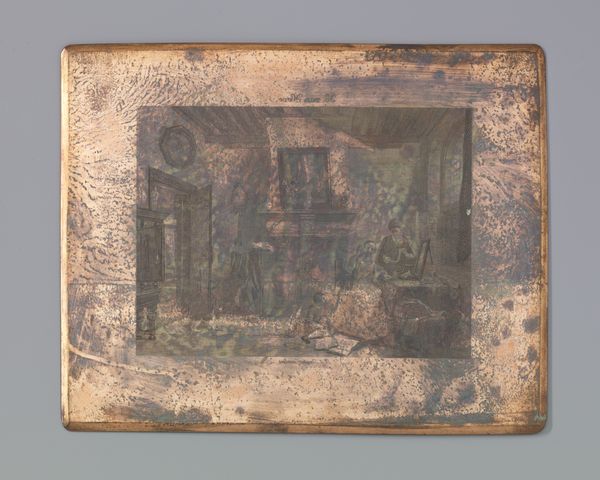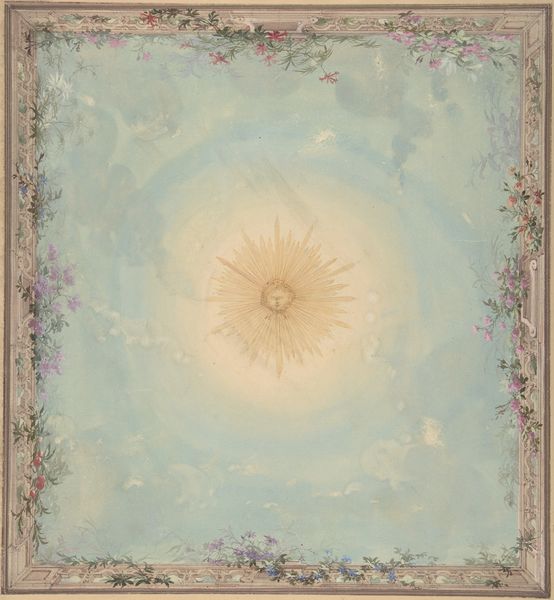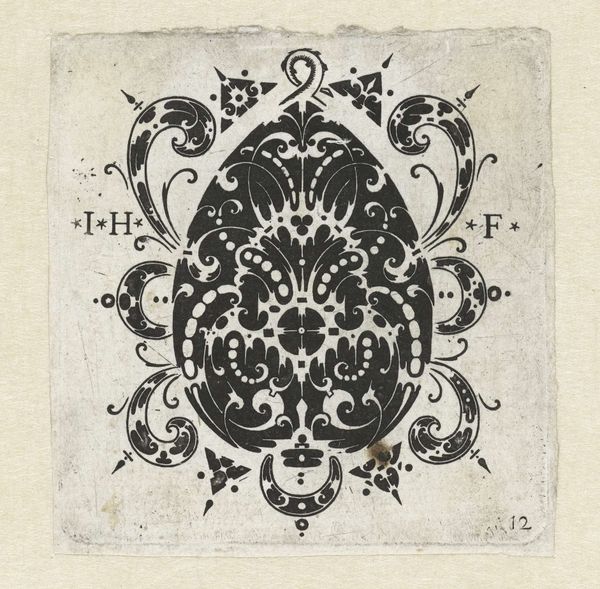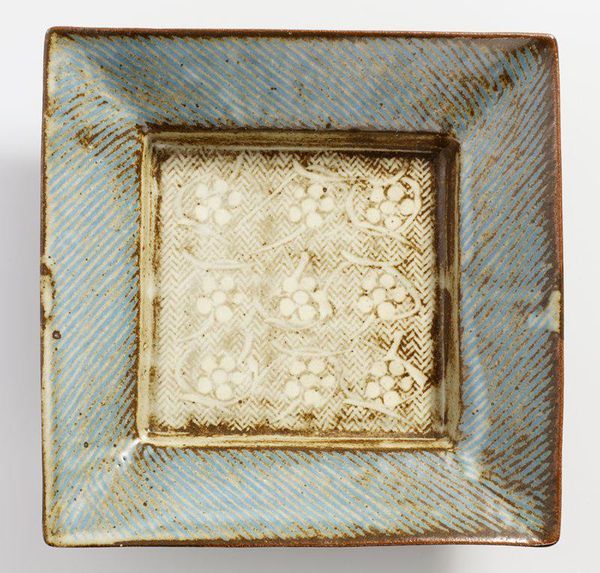
mixed-media, print, metal, engraving
#
mixed-media
# print
#
metal
#
coloured pencil
#
geometric
#
line
#
decorative-art
#
engraving
#
mixed media
Dimensions: height 205 mm, width 186 mm
Copyright: Rijks Museum: Open Domain
Editor: Here we have "Wapen van Nederland," or "Coat of Arms of the Netherlands," created sometime between 1900 and 1930, artist unknown. It's a mixed media piece, using metal, print, and engraving techniques, among others. I'm immediately struck by the contrast between the formality of the subject and the almost degraded appearance of the metal. What can you tell me about this work? Curator: Notice how the metal, presumably mass-produced in some factory, is then engraved – individualized through hand-labor. This tension between mass production and individual craft is central. It challenges notions of ‘high art’ by embedding it in a common, material process. What implications does the ‘Wapen,’ a symbol of national power, having this process, convey? Editor: Well, I suppose it makes the symbol seem more accessible, less rarefied. More for the people, perhaps? The imperfection of the medium certainly democratizes the image, rather than preserving it behind a pristine finish. Curator: Precisely. Think about where something like this would be displayed or sold. Not in a gallery, but perhaps a shop selling commemorative objects. What does this say about how Dutch identity was constructed and consumed at this time? Consider, too, how the materials themselves--metal, ink, print--relate to Dutch industry and trade. Editor: That makes a lot of sense. Seeing it not just as an image, but as an object within a wider system of production really shifts my perspective. It makes you think about all the hands involved in its creation and distribution, not just an artist's single vision. Curator: It prompts us to consider who benefits from this particular depiction of Dutch identity and power. The "how" and "why" are as essential to understanding its cultural importance as its aesthetic properties. Editor: I never really thought about it that way before. It's fascinating how looking at the materials and production can open up new avenues of interpretation. Thank you! Curator: My pleasure. Looking closely at the materiality of things offers a rich alternative perspective.
Comments
No comments
Be the first to comment and join the conversation on the ultimate creative platform.
